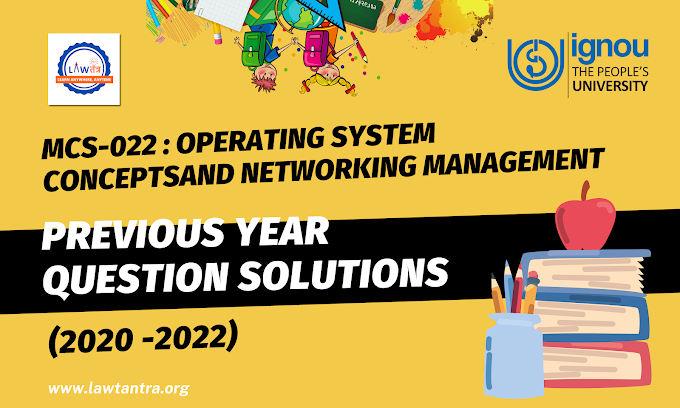Answer: e-Governance
17 Oct 2019 16 min read
Tags: GS Paper - 2E-Governance
e-Governance can be defined as the application of information and communication technology (ICT) for providing government services, exchange of information, transactions, integration of previously existing services and information portals.
The “e” in e-Governance stands for ‘electronic’.
The Council of Europe referred to e-Governance as:
The use of electronic technologies in three areas of public action:
relations between the public authorities and civil society
the functioning of the public authorities at all stages of the democratic process (electronic democracy)
the provision of public services (electronic public services)
Reasons for Opting e-Governance
Governance per se has become very complex
Increase in citizens’ expectations from the government
Different Connotations of e-Governance
e-Administration: The use of ICTs to modernize the state; the creation of data repositories for Management Information System (MIS) and computerization of records (land, health etc).
e-Services: The emphasis here is to bring the state closer to the citizens.
For Examples: Provision of online services.
e-administration and e-services together constitute what is largely termed as e-government.
e-Governance: The use of IT to improve the ability of the government to address the needs of society.
It includes the publishing of policy and program-related information to transact with citizens.
It extends beyond the provision of online services and covers the use of IT for strategic planning and reaching the development goals of the government.
e-Democracy: The use of IT to facilitate the ability of all sections of society to participate in the governance of the state.
Emphasis is on bringing transparency, accountability, and participation of people.
It includes online disclosures of policies, online grievance redressal, e-referendums etc.
Origin
e-Governance originated in India during the 1970s with a focus on in-house government applications in the areas of defence, economic monitoring, planning and deployment of ICT to manage data intensive functions related to elections, census, tax administration etc.
Initial Steps Taken
The establishment of the Department of Electronics in 1970 was the first major step towards e-governance in India as it brought ‘information’ and its communication to focus.
National Informatics Centre (NIC) established in 1977, launched the District Information System program to computerize all district offices in the country
The main thrust for e-governance was provided by the launching of NICNET in 1987 – the national satellite-based computer network.
Objectives
Better service delivery to citizens.
Ushering in transparency and accountability.
Empowering people through information.
Improve efficiency within Government i.e between centre-state or inter-states.
Improve interface with business and industry.
Pillars of e-Governance
People
Process
Technology
Resources
Types of Interaction in e-Governance
G2G i.e. Government to Government
G2C i.e. Government to Citizen
G2B i.e. Government to Business
G2E i.e. Government to Employees
Initiatives Taken for e-Governance in India
S.No. Program Details
1. Bhoomi Project (Karnataka): Online Delivery of Land Records Bhoomi is a self-sustainable e-Governance project for the computerized delivery of 20 million rural land records to 6.7 million farmers of Karnataka.
2. KHAJANE (Karnataka): End-to-end automation of Government Treasury System
‘Government-to-Government (G2G) e-Governance initiative of the Karnataka State Government.
It has been implemented mainly to eliminate systemic deficiencies in the manual treasury system and for the efficient management of state finances.
3. e-Seva (Andhra Pradesh)
Designed to provide ‘Government to Citizen’ and ‘e-Business to Citizen’ services.
All the services are delivered online to consumers /citizens by connecting them to the respective government departments and providing online information at the point of service delivery.
The project has become very popular among the citizens especially for the payment of utility bills.
4. e-Courts
Launched by the Department of Justice, Ministry of Law and Justice.
The Mission Mode Project (MMP) aims at utilizing technology for improved provisioning of judicial services to citizens.
5. e-District
Launched by the Department of Information Technology.
The MMP aims at delivery of high volume, citizen-centric services at the District level such as the issue of birth/death certificate, income and caste certificates, old age and widow pension, etc.
6. MCA21
Launched by the Ministry of Corporate Affairs.
The project aims to provide electronic services to the Companies registered under the Companies Act.
Various online facilities offered includes allocation and change of name, incorporation, online payment of registration charges, change in address of registered office, viewing of public records and other related services.
7. e-Office
Launched by the Department of Administrative Reforms & Public Grievances.
The MMP aims at significantly improving the operational efficiency of the Government by transitioning to a "Less Paper Office".
Digital India Initiatives
It is an umbrella program to prepare India for a knowledge-based transformation.
It weaves together a large number of ideas and thoughts into a single comprehensive vision so that each of them is seen as part of a larger goal.
It has been launched by the Ministry of Electronics and Information Technology (Meity).
Vision Areas
Digital infrastructure as Utility to Every Citizen
Governance and services on demand
Digital empowerment of citizens
Various Initiatives Under Digital India Initiatives
MyGov: It aims to establish a link between Government and Citizens towards meeting the goal of good governance.
It encourages citizens as well as people abroad to participate in various activities i.e. 'Do', 'Discuss', 'Poll', 'Talk', ‘Blog’, etc.
DigiLocker: It serves as a platform to enable citizens to securely store and share their documents with service providers who can directly access them electronically.
e-Hospital-Online Registration Framework (ORF): It is an initiative to facilitate the patients to take online OPD appointments with government hospitals. This framework also covers patient care, laboratory services and medical record management.
National Scholarships Portal (NSP): It provides a centralized platform for application and disbursement of scholarship to students under any scholarship scheme.
DARPAN: It is an online tool that can be used to monitor and analyze the implementation of critical and high priority projects of the State.
It facilitates presentation of real time data on Key Performance Indicators (KPIs) of selected schemes/projects to the senior functionaries of the State Government as well as district administration.
PRAGATI (Pro-Active Governance And Timely Implementation): It has been aimed at starting a culture of Pro-Active Governance and Timely Implementation.
It is also a robust system for bringing e-transparency and e-accountability with real-time presence and exchange among the key stakeholders.
It was launched in 2015.
Common Services Centres 2.0 (CSC 2.0): It is being implemented to develop and provide support to the use of information technology in rural areas of the country.
The CSCs are Information and Communication Technology (ICT) enabled kiosks with broadband connectivity to provide various Governments, private and social services at the doorstep of the citizen.
Mobile Seva: It provides government services to the people through mobile phones and tablets.
Jeevan Pramaan: It is an Aadhaar based Biometric Authentication System for Pensioners.
The system provides authenticity to Digital Life Certificate without the necessity of the pensioner being present in person before his/ her Pension Dispensing Authority (PDA).
National Centre of Geo-informatics (NCoG): Under this project, Geographic Information System (GIS) platform for sharing, collaboration, location based analytics and decision support system for Departments has been developed.
National e-Governance Plan (NeGP): It takes a holistic view of e-Governance initiatives across the country, integrating them into a collective vision and a shared cause.






0 Comments
Please do not enter any spam link in the comment box.